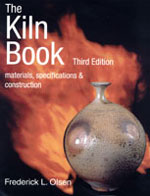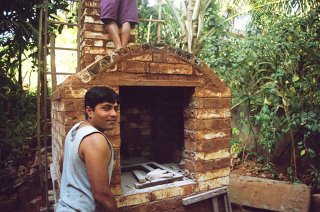As we moved away from urban centers and villages, we became quieter as miles stretched into terrain empty of people, hitting stretches of road that were straight in parts, and other times curving past bends, brushing vegetation as we negotiated the turns in the road. Looking back now, I find it surprising how when passing through quiet stretches away from the bustle of the city, silence influences us into talking less. I wonder if the reason we go silent is because we seek out noises alien to our lives in bustling cities where we’d rather talk to drown out the world outside our windows than hear the jarring jumble of orphaned noises intersecting our spaces in a wild medley of unconnected rants. It is not so out in the countryside where life teems in myriad forms, each with a voice unique to the space it inhabits, rarely interfering with another, and co-existing naturally with others equally at home in the wilds as them. This gives them a unique identity with which to identify them, hence heightening the experience when those melodies and other jungle sounds float in. Motoring along bumpily over speed-breakers that cropped up unannounced, helped in no small measure by Raju believing in not slowing down, we heard birds in the trees on either side of the road as deciduous vegetation flashed by outside. We also heard the silence, and our breathing.
The sun was beginning to dip to our left as we drove on the empty road on a cool summer evening in Goa. Patches of road lit up in gold where the sun got through the trees. I watched as the car ran down the golden shafts, and turning back I saw them resurrect again. Raju had taken time off from the fabrication firm he runs back home in Ponda, and so had Donald with his Electrical Contracting business. It was a welcome break for him from the daily grind at the Kundaim Industrial Estate at Kundaim, a village ten kilometers from Ponda on the way to Panjim, off the NH4A. Ajay had completed his portion of the syllabus at the school where he teaches and was enjoying his vacation, having halted work on the Fast-fire Downdraft kiln he was building in his backyard to make this trip possible. We’d gotten together after a long time, our association going back a long way. I had come down to Goa from Mumbai where I work, and it’s not often that we get to meet. And when we do, we take off into the countryside.

Nine kilometers from Sanquelim we passed a clump of trees on our way through Querim enroute to Chorla. A low concrete wall encircled the trees, holding up earth that held the trees in a tight embrace. A series of steps, painted white with lime powder, led up to a tiny temple barely two feet high, made of bricks and plastered with cement, its roof an inverted V. Inside the small opening rested a deity, garlanded with Marigolds. The temple had no door covering the entrance, allowing the deity unfettered views of the road that ran past it. 'Shri Parodeshwar', the name of the deity, was written in red paint on the wall, velvet green from being covered in patches by moss indicating that not many people sat on the platform housing the temple. The place looked far from everywhere! A garland of marigolds lay on the platform beside the tiny temple, glowing orange in the evening sun. We pulled up to the side of the platform encircling the trees while I took a few pictures. ‘A type of Sacred grove,’ I thought, ‘to protect and worship trees’. It’s not often that I come across Sacred groves in Goa though there are many to the South of the state. Usually I come across individual trees protected similarly by a deity to whom they're dedicated. Though this one consisted of more than one tree, their numbers were insufficient to qualify it as a Sacred grove. Sacred groves are patches of forests dedicated to deities or ancestral spirits.
These forest patches may consist of a single tree species or multi-species depending on the make-up of vegetation in the area. In Goa, I've mostly seen individual trees dedicated to deities and worshipped. They are easily identifiable from the small temples built on low platforms that encircle them. Sometimes a group of trees are dedicated to deities like the one we saw on our way to Chorla. But Devran (also known as Devrai), a Konkani term used to describe Sacred groves in Goa, are not as common though the one at Nanoda-Bambar in Sattari taluka, in the Western ghats mountain ranges, is well known for its significance in protecting vegetation categorised as Myristica swamp forests. "There are only two known instances of Myristica eco-systems in the world," Dr. Kasturi Dessai, a lecturer in Botany, and Dr. Narayan Dessai's wife, told me. "The other one is found in Kerela." Declaring it a Sacred grove ensured its survival.
 Bambar, near Nanus, a short way off Valpoi, is among the few places in Sattari taluka where one can see the Western ghats in all its grandeur. In the late nineteen-eighties, a group of us used Nanus as our base camp over five days to trek in the mountain ranges along three routes: Satregad, Krishnapur, and Bambar. I barely survived the first day after Samir and I were caught in the middle of a rising river on our return from a very difficult climb up the Satregad. The rescue lasted one and half hours using wild bamboo fetched from the forest nearby and ropes taken from our tents to tie the bamboo together. The route to Bambar was infested with leeches, turning my shoes red from the bleeding as I tried to pluck them off. We had carried tobacco and salt to use on exposed skin to deter the leeches, but there were far too many streams along the route, washing off the salt and tobacco we'd applied. After crossing each stream we reapplied the preparation only to see it washed off after a few metres when crossing the next stream. Eventually we gave up though I found it difficult to ignore the leeches latching onto my skin as we brushed past vegetation on our way. Bambar is also home to rubber plantations. It was there that I first saw how rubber is processed into raw products for dispatch to processing plants. It was November, a time when most of India has emerged from the monsoons but out here, mountains and hills were damp from incessant rains.
Bambar, near Nanus, a short way off Valpoi, is among the few places in Sattari taluka where one can see the Western ghats in all its grandeur. In the late nineteen-eighties, a group of us used Nanus as our base camp over five days to trek in the mountain ranges along three routes: Satregad, Krishnapur, and Bambar. I barely survived the first day after Samir and I were caught in the middle of a rising river on our return from a very difficult climb up the Satregad. The rescue lasted one and half hours using wild bamboo fetched from the forest nearby and ropes taken from our tents to tie the bamboo together. The route to Bambar was infested with leeches, turning my shoes red from the bleeding as I tried to pluck them off. We had carried tobacco and salt to use on exposed skin to deter the leeches, but there were far too many streams along the route, washing off the salt and tobacco we'd applied. After crossing each stream we reapplied the preparation only to see it washed off after a few metres when crossing the next stream. Eventually we gave up though I found it difficult to ignore the leeches latching onto my skin as we brushed past vegetation on our way. Bambar is also home to rubber plantations. It was there that I first saw how rubber is processed into raw products for dispatch to processing plants. It was November, a time when most of India has emerged from the monsoons but out here, mountains and hills were damp from incessant rains.
Sanguem, the other Goan taluka in the rain shadow of the Western ghats is also home to Sacred groves. The very nature of these mountain ranges, home to dense forests and tribal communities who've lived there over hundreds of years, facilitates nature worship, helping preserve the tradition passed on from generation to generation.
Later, talking of the temple I saw on the trip to Chorla, Narayan Dessai, Principal at a higher secondary school in Canacona to the south of Goa, told me that there were several reasons behind this practice taking root across Goa.
“Where single trees are to be found, the tree and the deity it is dedicated to form a religious motif,” he said. “Usually, the way the holding wall is fashioned around the tree, with a small temple housing the deity, it facilitates gatherings where people meet up and sit on the circular platform after offering prayers. The other reason is to ward off evil in lonely places that people are fearful of negotiating alone or in groups, usually when alone. Having a temple in the area effectively says ‘Now you need not fear, you’re protected by the deity. Pass this way in peace.’” He believes that this practice also seeks to assign value to trees, adding, “Historically, some species like the Ficus, the Banyan, and the Peepal are protected in this manner, even Mango trees, and it’s not without reason. These trees find wide mention in Hindu traditions of worship, and in Hindu religious texts.”
It reminded me of the massive Banyan at Farmagudi, two kilometres from Ponda town, where a low platform encircles the Banyan. A tiny temple not dissimilar to the one in the picture is housed on the platform where people offer prayers and light incense sticks. The Banyan is a permanent fixture in the landscape at Farmagudi, and travelers alighting at Farmagudi get off the bus at the bus-stop under the Banyan. Students studying at the PES college of Arts and Science across the road from the Banyan, and those awaiting their college bus to take them to the Goa Engineering college up the hill a short distance off, sit on the platform awaiting Ponda bound buses arriving from Panjim to take them to town, or those from Ponda on their way to Panjim. In the years when Chandroo was alive, we used to savour his Usal-pao at his inn outside the Ganpati temple on the other side of the Banyan, off the narrow road that leads to Nagueshi. Now his son runs the place. The Banyan accommodated many a traveler sheltering under it from the heat of the summer and the fierce monsoons until, one monsoon day a few years ago, a part of it bent over and crashed during a particularly fierce storm. For a long time afterward the massive branches remained where they fell, in time becoming a permanent fixture themselves until they were cleared. A part of the Banyan still stands, spreading roots, and reinforcing faith in nature and its pilgrims.
Nature worship is central to Hinduism. Narayan Dessai made an interesting comment, “At times, these temples serve as boundaries of villages. When you pass the tree and the deity that guards it, you'll know you've left one village and entered another though this is not true in every instance. In worshipping trees where deities live, this practice helps protect trees and aids conservation in a big way." 'Besides protecting pilgrims on their way elsewhere,' I thought recollecting our trip to Chorla when we were the unlikely pilgrims of a lonely road.
















 The train is late by two minutes. The platform is packed to capacity now. There is nowhere empty she can 'hide' her face, nowhere she can look and not find eyes looking back at her, so she puts her head down, crosses her hands across her bosom, and looks at her feet. Her feet don’t have eyes, so it’s ok. Over time she’s learned the moods of her feet better than her own.
The train is late by two minutes. The platform is packed to capacity now. There is nowhere empty she can 'hide' her face, nowhere she can look and not find eyes looking back at her, so she puts her head down, crosses her hands across her bosom, and looks at her feet. Her feet don’t have eyes, so it’s ok. Over time she’s learned the moods of her feet better than her own. 





